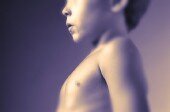Across five consecutive years increase in prevalence and sensitivity for curves of 20 degrees or more
FRIDAY, May 22, 2015 (HealthDay News) — School scoliosis screening can have sustained clinical effectiveness in identifying patients with adolescent idiopathic scoliosis, according to a study published in the May 1 issue of The Spine Journal.
Daniel Y.T. Fong, Ph.D., from the University of Hong Kong, and colleagues examined the sustainability of the clinical effectiveness of school scoliosis screening in a large population-based cohort study. A total of 306,144 students who were in fifth grade during five consecutive academic years were screened and followed for 10 years.
The researchers found that the prevalence of curves of 20 degrees or greater was 1.8 percent. For curves of 20 degrees or greater, the referral rate for radiography was 4.1 percent, sensitivity was 91 percent, and positive predictive value was 40 percent. Across the five consecutive annual cohorts, the prevalence of curves of 20 degrees or greater increased by 0.23 percent per year and the sensitivity increased by 0.76 percent per year; however, there was a reduction in positive predictive value of 1.71 percent per year.
“As the prevalence of adolescent idiopathic scoliosis increases, scoliosis screening should be continued as a routine health service in schools or by general practitioners if there is no scoliosis screening policy,” the authors write.
Copyright © 2015 HealthDay. All rights reserved.








